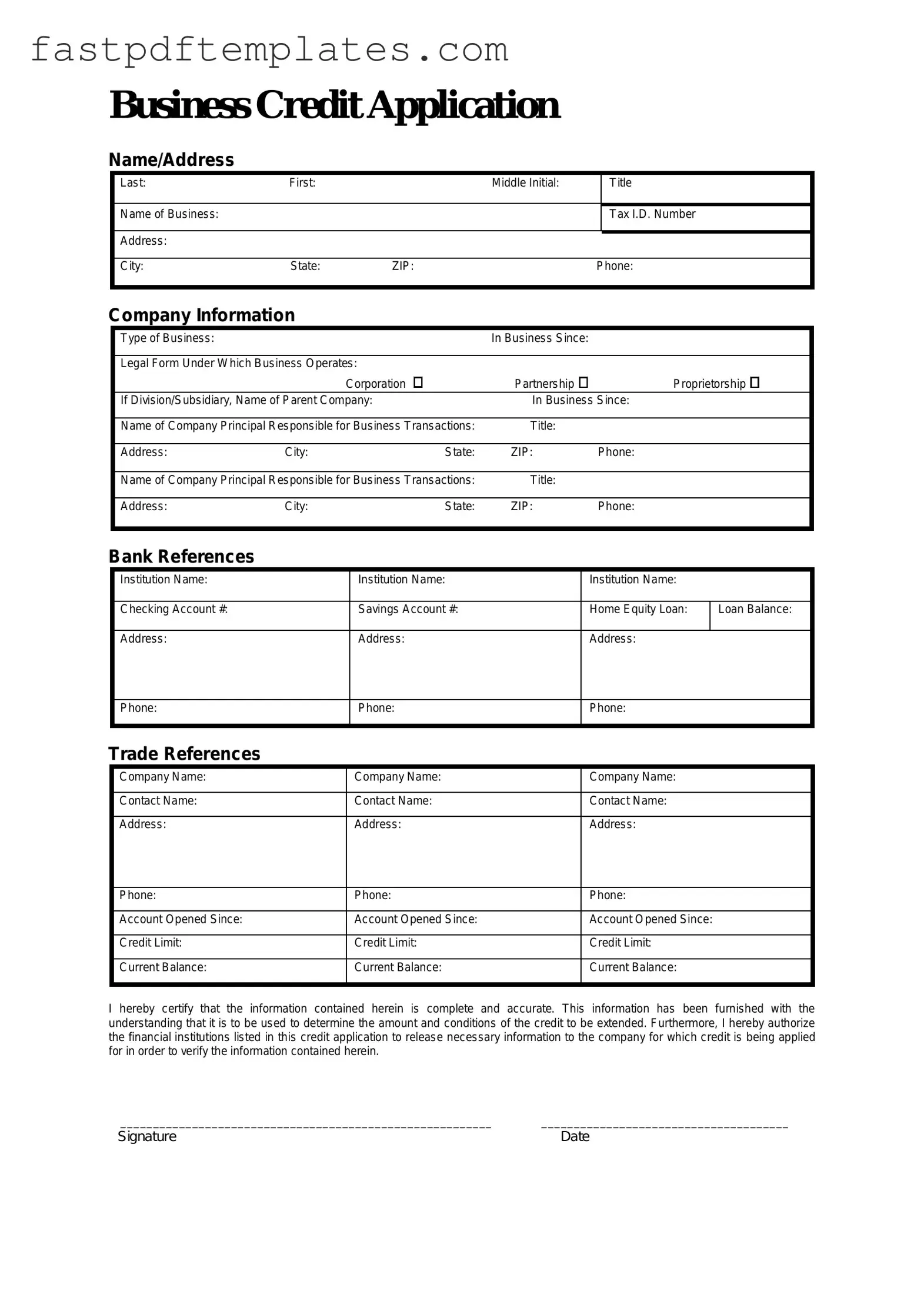The Business Credit Application form is similar to a Loan Application form. Both documents serve to assess the financial stability and creditworthiness of an applicant. A Loan Application typically requires detailed information about the borrower's income, debts, and assets. Similarly, the Business Credit Application seeks to gather comprehensive data about a business's financial health, including revenue, expenses, and existing credit lines. This information helps lenders make informed decisions regarding the extension of credit.
Another document akin to the Business Credit Application is the Vendor Credit Application. Vendors often require businesses to complete this form before extending credit for goods or services. Like the Business Credit Application, it collects essential information about the business's financial history and payment practices. Both documents aim to mitigate risk for the creditor by ensuring that the applicant can meet their financial obligations.
The Personal Financial Statement shares similarities with the Business Credit Application as well. This document provides a snapshot of an individual's financial situation, including assets, liabilities, and net worth. When a business owner submits a Business Credit Application, personal financial information may also be required to assess the owner's ability to guarantee the business's debts. Thus, both documents focus on financial transparency and accountability.
The Business Loan Agreement is another related document. Once a credit application is approved, the terms of the loan are outlined in this agreement. While the Business Credit Application assesses eligibility, the Loan Agreement details the obligations and rights of both parties. It includes information such as loan amounts, interest rates, and repayment schedules, all of which stem from the initial application process.
The Credit Reference Request form is also comparable. This document is used to gather information from other creditors about the applicant's payment history and credit behavior. Similar to the Business Credit Application, it aims to evaluate the risk involved in extending credit. Both documents rely on external validation to support the decision-making process regarding creditworthiness.
The Financial Statement is yet another document that mirrors the Business Credit Application. It provides a detailed account of a company's financial performance over a specific period. Lenders often require this statement to assess the business's profitability and cash flow. Both documents are crucial in evaluating whether a business can sustain additional credit without jeopardizing its financial stability.
Lastly, the Partnership Agreement can be seen as similar in nature. This document outlines the terms and conditions under which business partners operate. When a business applies for credit, lenders may review the Partnership Agreement to understand the roles and responsibilities of each partner. This understanding is vital, as it impacts the business's ability to repay any credit extended, just as the Business Credit Application does.

